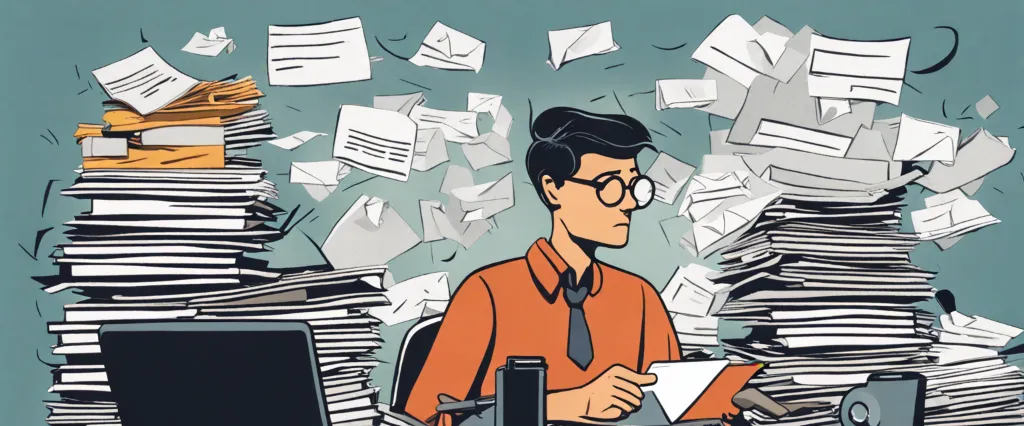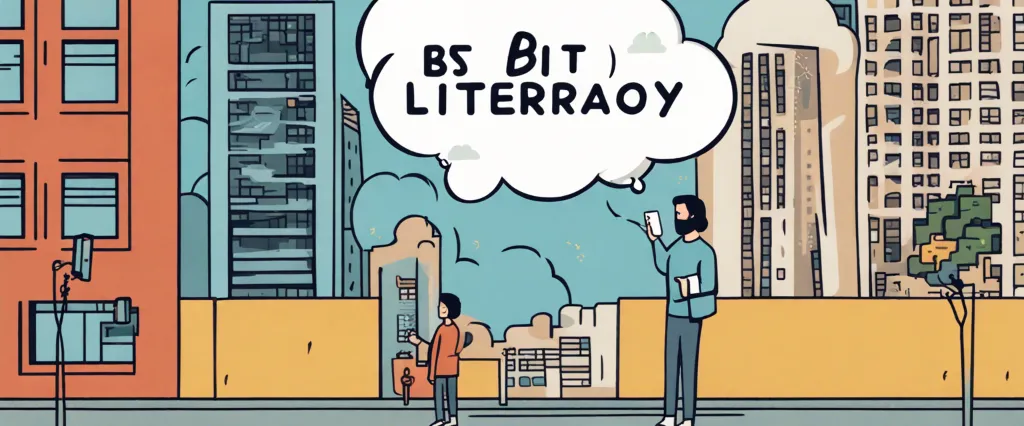In his groundbreaking book, “Bit Literacy” Mark Hurst offers a transformative approach to tackling the overwhelming information overload that plagues our digital lives. By teaching readers how to become “bit literate,” Hurst provides effective strategies for managing digital clutter and reclaiming valuable time and energy. As the founder of the consultancy firm Creative Good and a renowned expert in user experience design, Hurst serves as a trusted guide, assisting individuals and organizations in navigating the complexities of the digital age. With his wealth of knowledge and expertise, Hurst empowers readers to optimize their digital workflows and create a more focused, productive, and fulfilling digital life.
Chapter 1: The Basics of Bit Literacy
The chapter begins with the author, Mark Hurst, emphasizing the overwhelming nature of the digital age. He highlights the constant stream of emails, social media notifications, and other digital distractions that compete for our attention. Hurst argues that our inability to cope with this digital deluge leads to stress, reduced productivity, and a general sense of being overwhelmed.
He introduces a new approach to tackling this problem, proposing the development of “bit literacy” skills, which he defines as the ability to turn information into knowledge effectively. This involves managing, organizing, and processing digital information in a way that aligns with our individual needs and goals.
Hurst presents five essential skills that form the foundation of bit literacy: filtering, storing, searching, sharing, and acting. Filtering involves managing the flow of information by setting up effective email filters, utilizing spam blockers, and unsubscribing from unnecessary newsletters. Storing refers to the systematic organization of digital content, such as creating folders, tagging files, and using cloud storage. Searching emphasizes the use of efficient search strategies to quickly find the information we need. Sharing explores the importance of curating and selectively sharing information with others. Finally, acting addresses the need to move beyond simply consuming information and actively engaging with it.
Throughout the chapter, Hurst provides practical tips and techniques for developing these bit literacy skills. He emphasizes the importance of creating a personal system that works for each individual, understanding that there is no one-size-fits-all approach.
By mastering these bit literacy skills, individuals can regain control over their digital lives, reduce stress, and increase their overall effectiveness in a world filled with information overload.
Chapter 2: Managing Email Overload
The chapter begins by highlighting the issue of email overload, explaining how the increasing influx of emails can lead to stress, distraction, and reduced productivity. Hurst emphasizes the importance of developing a system for managing email efficiently to regain control over one’s digital communication.
Hurst introduces the concept of “Email DMZ” or “Demilitarized Zone,” which involves creating a separate email account specifically for newsletters, subscriptions, and other non-critical emails. By filtering out all these non-essential emails from your primary inbox, you can reduce clutter and better prioritize important messages.
The author then addresses the “Inbox Zero” approach, which involves maintaining an empty inbox by processing emails promptly and either acting on them, deleting them, or filing them away for future reference. Hurst suggests organizing emails into folders based on projects or categories to easily locate them later.
Next, Hurst discusses the significance of email etiquette, stressing the importance of concise and focused communication. By keeping emails brief and addressing one topic per message, you can foster clear and efficient communication.
Furthermore, the chapter highlights the benefits of scheduling regular email check-in times instead of constantly monitoring the inbox. This approach allows for uninterrupted work on other tasks and prevents email from becoming a constant distraction.
Chapter 3: Organizing Digital Files and Documents
The chapter begins by emphasizing the massive amount of digital clutter present in most people’s lives and how it can impede their ability to find and use information efficiently.
Hurst introduces the concept of a “bit literacy program,” which enables individuals to take charge of their digital clutter and regain control of their digital lives. He explains that organizing digital files and documents should follow a logical and consistent system that suits one’s individual needs and preferences, rather than following complicated and rigid organizational methods.
Hurst suggests several strategies to implement an effective organizational system, including creating a standardized naming convention for files, using folders and subfolders to categorize information, and adopting a unified file structure across devices. He also highlights the importance of regular file maintenance, such as deleting unnecessary files, updating outdated ones, and backing up important information.
The chapter discusses the benefits of organizing digital files, such as saving time searching for information, reducing mental clutter, and improving productivity. Hurst also emphasizes the need to leverage powerful search functions on computers and digital platforms to quickly access specific files when needed.
Overall, this chapter focuses on the importance of establishing an organized approach to managing digital files and documents. By implementing consistent naming conventions, categorization systems, and regular maintenance, individuals can streamline their digital lives, improve their ability to find information, and enhance their overall productivity.
Chapter 4: Streamlining Online Communication

Hurst begins by highlighting the overwhelming nature of online communication, as it often floods our inboxes, chat apps, and social media feeds. He argues that in order to maintain a sense of control and reduce the stress associated with this constant barrage of messages, individuals must adopt a systematic approach.
The author introduces the concept of “streams,” which refers to the various channels of communication that require attention. By identifying and categorizing these streams, individuals can better allocate their time and prioritize their responses. Hurst suggests creating separate inboxes or folders for different types of messages, ensuring that important ones do not get buried or lost among the clutter.
Moreover, Hurst emphasizes the importance of setting boundaries and limits when it comes to online communication. He encourages readers to establish specific time slots for checking and responding to messages, as well as setting expectations with others regarding response times. This helps individuals avoid constantly being pulled into an endless cycle of checking and responding to messages, allowing for more focused and productive work sessions.
Additionally, the author highlights the need to be intentional about subscribing and unsubscribing from newsletters, mailing lists, and social media updates. By curating the content received, individuals can reduce information overload and only focus on what is relevant and useful.
By implementing these techniques, individuals can regain control over their digital interactions, leading to increased productivity and reduced stress.
Chapter 5: Filtering and Managing Information
Hurst begins by discussing the concept of “email bankruptcy,” where people become inundated with a backlog of unread emails. He emphasizes the importance of tackling this issue head-on by implementing a system to clear the backlog and prevent it from recurring. He suggests using filters, rules, and tags to automatically categorize incoming messages, allowing for efficient prioritization and organization.
The author then introduces the “Triage” process, which involves quick decision-making regarding messages and other forms of digital information. Triage involves categorizing information into three main types: action, reference, and trash. By promptly deciding on the appropriate category for each piece of information, individuals can prevent their inboxes and devices from becoming cluttered.
Hurst also highlights the significance of setting up an effective filing system for reference materials. He recommends creating a folder structure that aligns with one’s specific needs and utilizing search tools to quickly find relevant information when necessary.
Additionally, the chapter delves into the issue of overconsumption of news and social media. Hurst suggests being mindful of the time spent on these platforms and setting limits to maintain a healthy consumption habit. He advises developing a system for aggregating news sources and customizing them based on personal interests, thereby receiving only relevant and significant updates.
By implementing systems and processes like email filters, the triage method, and custom news aggregators, individuals can gain control over their digital information consumption and avoid feeling overwhelmed.
Chapter 6: Mastering Digital Distractions
Hurst starts by highlighting the constant stream of notifications, emails, text messages, and other digital distractions that bombard us daily. He argues that these interruptions disrupt our productivity, mental well-being, and ability to concentrate on deep work.
The author makes an important distinction between proactive and reactive communication. Proactive communication involves actively deciding when and how to engage with digital platforms, while reactive communication is being constantly available and responsive to incoming messages. Hurst notes that most people fall into the trap of reactive communication, sacrificing their focus and allowing distractions to dictate their day.
To combat this, Hurst suggests a three-step process called “Clear The Decks.” The first step is to unsubscribe from unnecessary email lists, minimizing the number of email distractions. The second step is to consolidate digital communication channels to reduce the need for constantly switching between platforms. Finally, the third step is to set boundaries for when and how you engage with digital distractions, such as turning off notifications during focused work sessions or designating specific times for checking email or social media.
Hurst also advises practicing the “pomodoro technique,” a time management method that involves working in focused, uninterrupted blocks of time followed by short breaks. This helps to manage distractions and increase productivity.
By implementing the “Clear The Decks” process and adopting techniques like the pomodoro technique, individuals can improve their focus, productivity, and overall well-being in the digital age.
Chapter 7: Creating Effective Digital Workflows
Hurst begins the chapter by highlighting the need for a clear and efficient system to manage the overwhelming amount of digital information we encounter daily. He introduces the concept of “Bit Literacy” as the ability to manage digital information effectively, comparing it to traditional literacy.
The chapter emphasizes the importance of establishing a consistent workflow that minimizes distractions and maximizes productivity. Hurst suggests starting by organizing and decluttering digital files and folders, making it easier to find what you need when you need it. He recommends using logical naming conventions and creating a hierarchical folder structure that reflects your workflow and priorities.
Additionally, Hurst introduces the concept of a “trusted system” as a centralized hub for managing all personal and professional tasks and commitments. This could be a dedicated app or a simple to-do list, as long as it is easily accessible and reliable.
The chapter also delves into the significance of effective email management. Hurst advises setting aside specific times throughout the day to check and respond to emails, avoiding the constant interruptions caused by constant email notifications. He emphasizes the importance of consistent email filing and archiving, using folders or labels to categorize and prioritize incoming emails.
Overall, the chapter emphasizes the need for intentional and systematic approaches to managing digital information and offers practical strategies aimed at reducing the digital clutter and improving productivity. By establishing effective workflows and implementing organized systems, individuals can become more bit literate and regain control over their digital lives.

Chapter 8: Cultivating a Productive Digital Lifestyle
The chapter begins by emphasizing the negative impacts of information overload, such as diminished productivity and increased stress levels. Hurst encourages readers to adopt a mindful approach to their digital lives and offers several key strategies to cultivate a productive digital lifestyle.
First, he advises individuals to create a personalized “dashboard” that consolidates and organizes their essential digital information, such as emails, calendars, and to-do lists. By having a centralized location for managing these critical elements, individuals can reduce distractions and easily identify their priorities.
Hurst also emphasizes the importance of setting boundaries and establishing a digital curfew. By designating specific times throughout the day to disconnect and not engage with digital devices, individuals can create a healthier work-life balance and avoid the negative repercussions of constant connectivity.
Furthermore, the chapter discusses the concept of “batching,” which involves grouping similar tasks together to improve efficiency. For example, rather than responding to emails as they come in, Hurst suggests setting aside dedicated time slots to address all emails at once. This approach prevents interruptions and enhances focus.
Additionally, the chapter emphasizes the significance of embracing digital minimalism, which involves decluttering and simplifying digital environments. By regularly reviewing and deleting unnecessary files, apps, and subscriptions, individuals can reduce digital noise, improve organization, and enhance overall productivity.
In summary, Chapter 8 provides valuable insights and practical strategies for individuals seeking to cultivate a productive digital lifestyle. Hurst’s suggestions include creating a personalized dashboard, setting boundaries, implementing batching techniques, and adopting digital minimalism practices – all of which aim to alleviate information overload and increase productivity within the digital realm.
After Reading
In conclusion, “Bit Literacy” by Mark Hurst provides readers with a comprehensive guide on how to effectively manage and organize the overwhelming amount of digital information in their lives. Hurst emphasizes the importance of developing a systematic approach to handling emails, files, and other digital clutter. By adopting his strategies, individuals can enhance their productivity, reduce stress, and regain control over their digital lives. Through practical tips and insightful observations, Hurst challenges readers to embrace a more intentional and focused approach to technology, ultimately empowering them to navigate the digital age with confidence and efficiency. Overall, “Bit Literacy” offers an invaluable resource for anyone looking to reclaim their digital space and find peace amidst the ever-expanding world of information.
1. The Art of Seduction” by Robert Greene
If you enjoyed “Bit Literacy” by Mark Hurst, “The Art of Seduction” is a captivating read that explores the strategies and psychology behind seduction. Robert Greene delves deep into the art form, drawing from historical figures and timeless techniques to help readers understand the power of charm and influence.
2. Designing Your Life” by Bill Burnett
For those who want to take control of their life paths and shape their future with intention, “Designing Your Life” is an exceptional choice. Bill Burnett offers practical advice and tools to help readers apply the principles of design thinking to their personal and professional lives, fostering a more meaningful and fulfilling existence.
3. Atomic Habits” by James Clear
If you are looking to enhance your productivity and make lasting positive changes in your life, “Atomic Habits” is a must-read. James Clear explores the power of small habits and demonstrates how these tiny tweaks can lead to remarkable transformations. This book provides actionable strategies and insights to help readers break bad habits, adopt good ones, and achieve long-term success.
4. Thinking, Fast and Slow” by Daniel Kahneman
In “Bit Literacy” by Mark Hurst, you encountered the importance of cognitive processing and managing information overload. “Thinking, Fast and Slow” by Daniel Kahneman takes this concept further, diving into the dual system of thinking we employ. Through captivating anecdotes and research, Kahneman examines the biases and shortcuts our minds take, allowing us to better understand our decision-making processes.
5. Digital Minimalism” by Cal Newport
Building on the themes explored in “Bit Literacy” by Mark Hurst, “Digital Minimalism” offers an insightful perspective on our excessive digital consumption. Cal Newport suggests practical strategies to declutter our digital lives, optimize technology usage, and regain control over our attention. This book provides valuable insights into redesigning our relationship with digital tools for a more focused and intentional existence.




